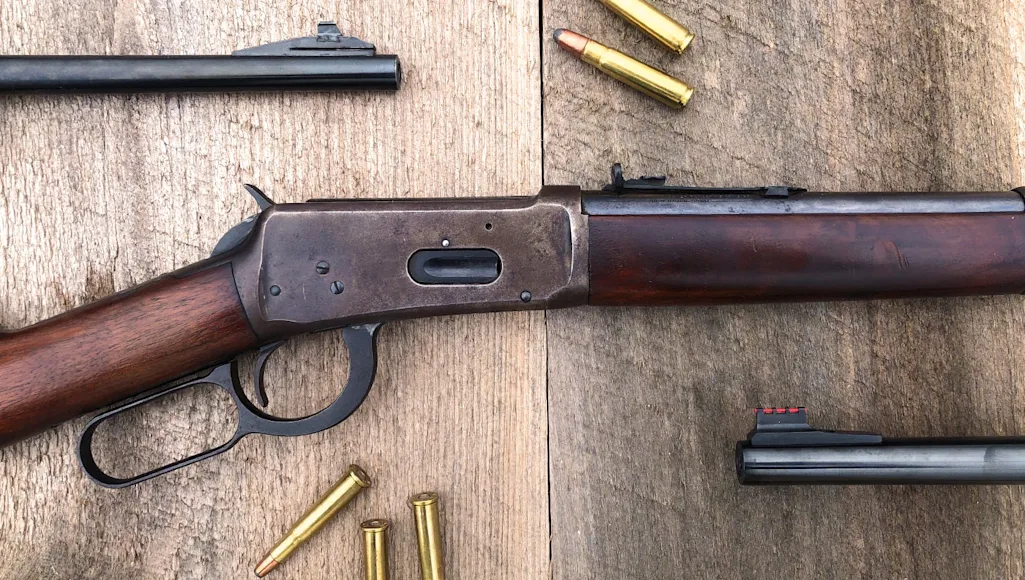_We may earn revenue from the products available on this page and participate in affiliate programs. Learn more ›
_
Am I obsolete? Of course. I haven’t spent the night on an airport floor since January, 1982, courtesy of Delta. People of modern manufacture get to do it all the time. Are iron sights obsolete for hunting? The answer to that is a fraction less obvious. Compared to the riflescopes
of my heyday, today’s are more capable and reliable by many orders of magnitude, and there are days when I wonder if any hunters of modern manufacture ever bother to shoot at critters from less than 400 yards. Otherwise, what’s there to brag about on Instagram. So, let’s consider the question more closely.
Scope Vs. Iron Sights: Performance in the Field
That a scope is generally more useful than iron sights on a hunting rifle
goes without saying. The question is, are there any situations in which iron sights are better. And the answer is, not as many as you may think. A lot of folks who hunt the woods for deer or the timber for elk believe, as we were told for decades, that open sights are quicker to get on target at close range. But we’ve tested this repeatedly, and in ain’t true.
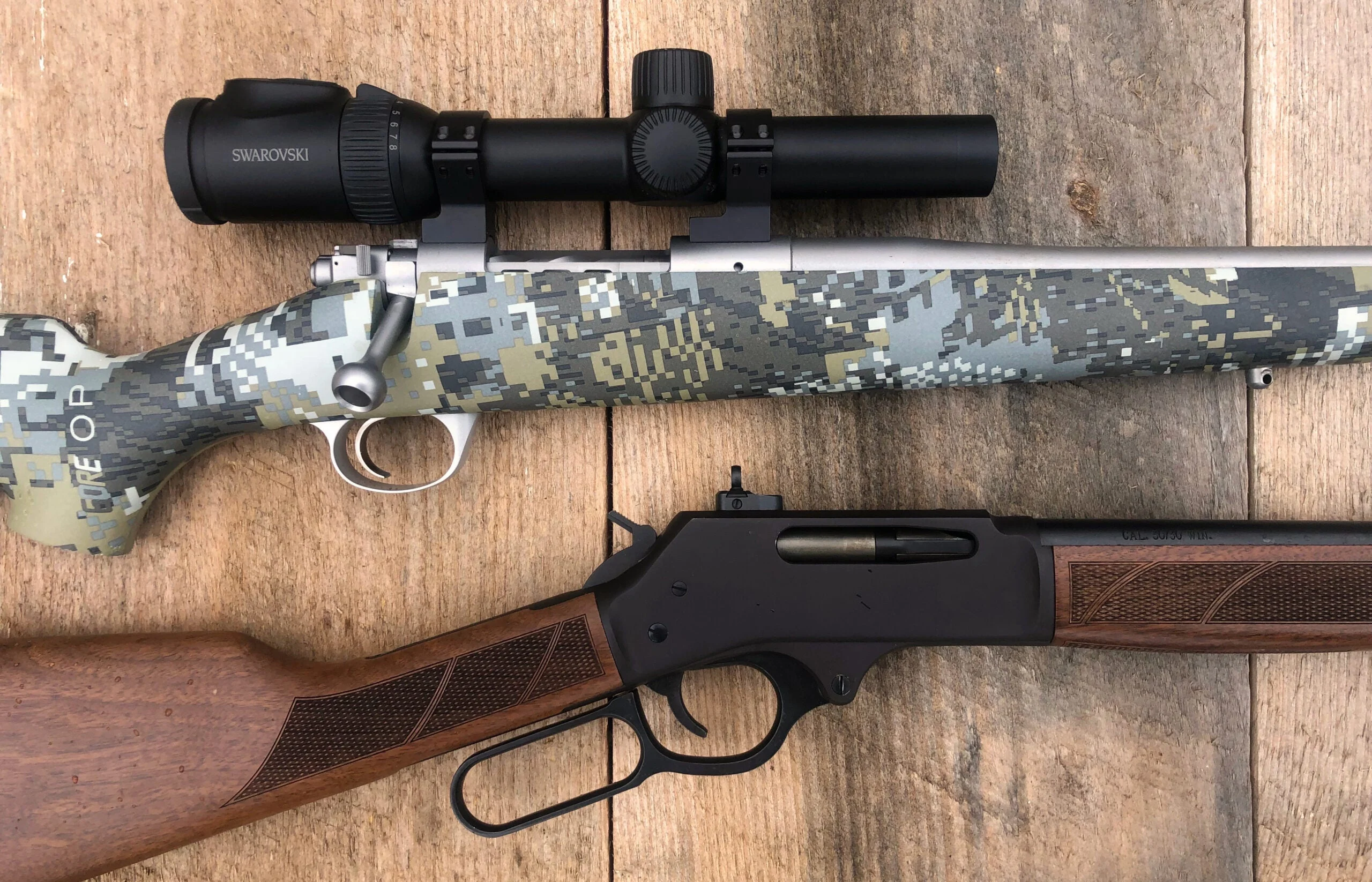
In an F&S test, a low-power illuminated scope (top) proved faster and more accurate on target than irons. Dave Hurteau
Years back, several F&S editors and I set up a paper target with a life-size image of a whitetail buck 25 yards away. We each took a string of timed shots, in which we started with a low gun, mounted the rifle, got on target as quickly as possible, and fired. Both speed and accuracy were factored into our scores. We did this using open sights (ghost-ring and front post), a red-dot sight, and a low-power illuminated scope. When it was all said and done, the open sights took last in both speed and accuracy. (The illuminated scope was fist, the red-dot second.) Other F&S editors and writers have done similar tests since and gotten the similar results.
Now, it’s important to note that, unlike a small handful of game animals, the paper target in the test above wasn’t capable of charging and killing us. We’ll get to that in a bit. For all hunters after any critter, there’s an another important consideration.
**Related: How to Use Iron Sights on a Rifle
**
A Question of Reliability
Modern scopes are miraculously improved over what they once were, but they still go terminal. Last summer, I was loading my car for a Mid-Range match. I had my rifle in a good soft case, on the floor, in front of the rear seat. The rear seat back was folded down, and my camp chair scooted forward, leaped off the seat back and landed on the cased rifle. The chair weighs very little, and it was a padded bump, but it knocked the scope so far out of zero that it shot roughly 20 feet to the right at 600 yards. I had to drop out of the match.
Scopes are comprised of scores of tiny, fragile parts, lens elements, lights, electric circuits, and who knows what else, and they’re getting more complicated every year. Any component can fail at any time for whatever reason it likes. Probably it’s a wonder that they hold up as well as they do. Also, scopes increasingly rely on batteries, as in “I thought I changed the damn thing. WTF do I do now?”
A correspondent of mine who is getting started as a big-game hunter has asked me what rifle I recommend as a backup gun. I answered that I didn’t think he needed a backup rifle, but that I would as soon go hunting without a spare scope as I would without gloves.
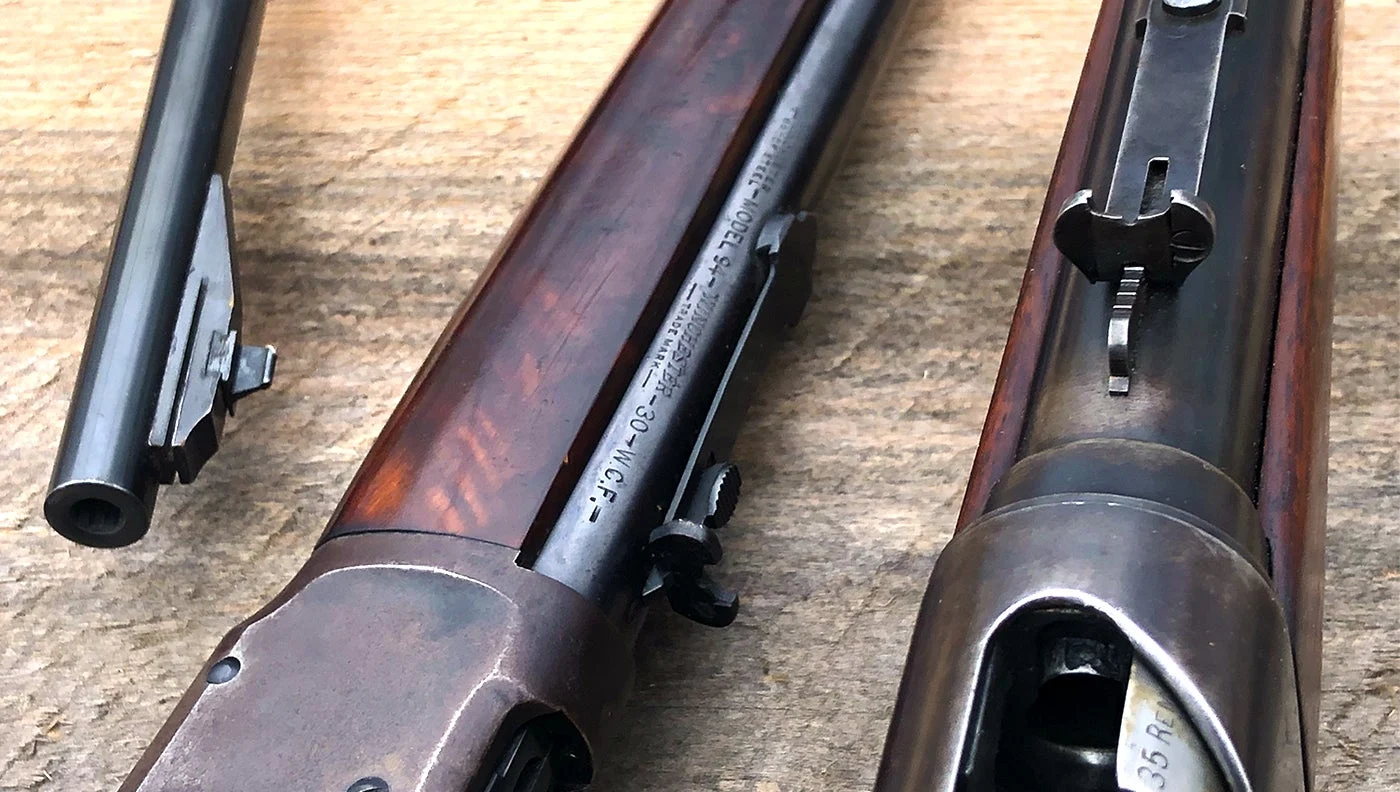
Iron sights on three classic deer rifles. Dave Hurteau
For many years, I’ve carried an extra, pre-sighted scope with me. I’ve never needed it myself, but it did save a safari for a friend of mine whose rifle case was run over by a tug at Kansas City Airport. His Model 70’s stock was cracked through the grip and his scope was squashed. He had epoxy with him, so he glued the stock together, and we took off the squashed scope and replaced it with my spare and he was back in business. The airline employee who ran over the case no doubt received the bonus customarily given for abusing gun cases.
But are iron sight more reliable? It depends. From roughly 1950 to 1970, when scopes were becoming widely accepted, rifles were invariably sold with iron sights as backups and stocks with enough drop at comb to accommodate either system. This would have been fine, except the sights were probably subcontracted to the same company that made the toys that went in Cracker Jack boxes. Junk is too kind a word for them. Front and rear sights were held to the barrel by two tiny 6/48 screws that worked loose the first chance they got, or were never tightened in the first place. As a result, some iron sights are no more reliable than is a scope. But some are.
Iron Sights For Dangerous Game
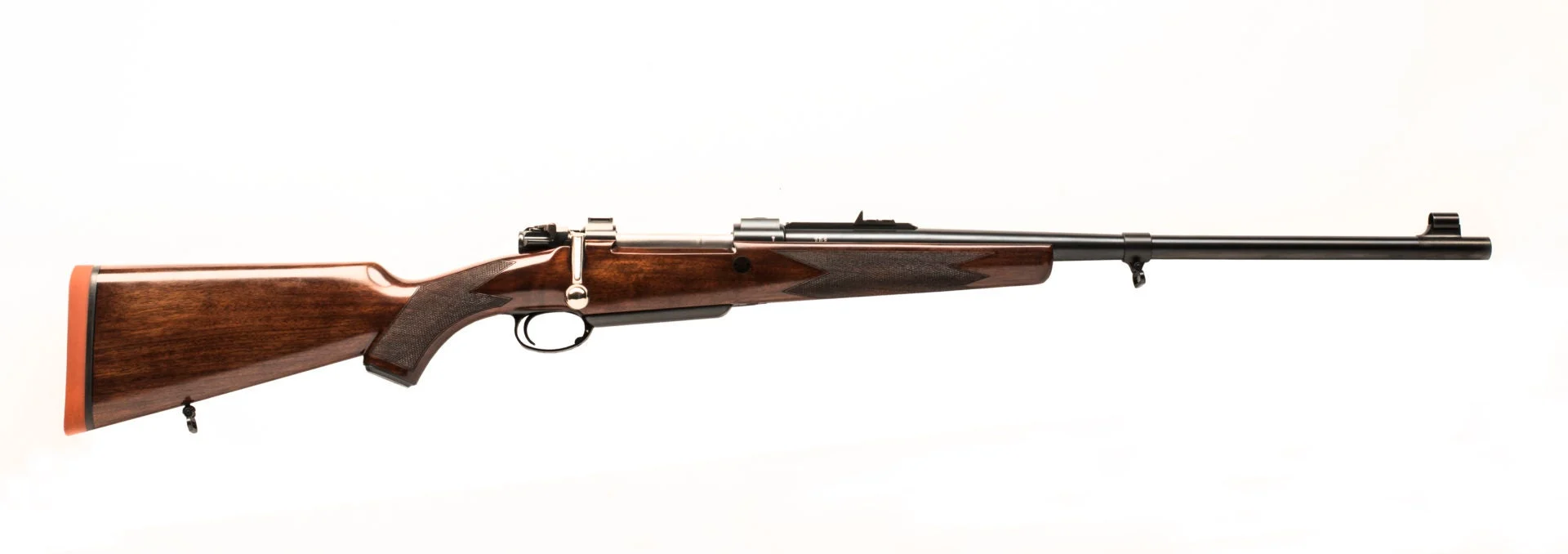
Rigby’s Big Game PH rifle comes wearing proper iron sights. Rigby
Iron sights, in order to be useful, must be nearly indestructible. The next time you’re in Africa, look at your PH’s rifle. Every PH I’ve ever hunted with used open iron sights, invariably a big gold or ivory bead up front and a wide rear V. The sight bases are always brazed and screwed in place, and the rear sight is designed so that once regulated, it will not budge. The front sight ramps have serious hoods on them to keep the beads from being bashed. Such sights will pass the Mt. Kilimanjaro Test; i.e., you could throw your rifle from the summit of Kilimanjaro and it would land at the bottom with the sights still usable. The combination of big bead and wide V has evolved over years of gorings, tramplings, chewings, and clawings for shooting very, very fast from very, very short range, and usually at a moving target. It’s not for general work.
**Related: 10 Greatest Dangerous Game Rifles
**
The Best Iron Sights
There’s another perfectly good reason to use iron sights. Some people just like a challenge, and if that’s you, it will be useful to know which iron sights to buy. If you want to aim precisely, the way to go is the plain flat-topped post up front and a rear peep, preferably a ghost ring. If you have decent eyesight, you’ll be amazed at how close you can hold with this combination at 200 or even 300 yards. For all-around use, I’m a big fan of fiber optic front sights. I find they show up much better than gold or ivory. The best colors are bug-guts green, red, and dark orange. The best source I know of for first-rate open sights is New England Custom Gun Service
in Claremont, NH.
If your rifle has a rail, you can swap sights around until you find exactly what you like or you run out of money. The quality of factory iron sights varies greatly. Some are of the Cracker Jack box variety. SIG-Sauer issues its rifles with first-rate sights. The Ruger Scout front sight is good, but the rear sight and rail are not nearly as good as the aftermarket XS Sights extended rail/ghost ring combination. Of the tactical aftermarket sights I’ve installed, the best are made by Troy Industries.
(And a word of advice: Follow the installation directions to the letter. If the manufacturer says to use blue Loc-Tite, use blue Loc-Tite. If they say red, use red. If they tell you to tighten the screws to so many foot-pounds or inch-ounces, that’s what you do. And once you have everything in place leave it alone. Once you break that initial screw seal it’s never as strong again.)
A No-Scope Resurgence?
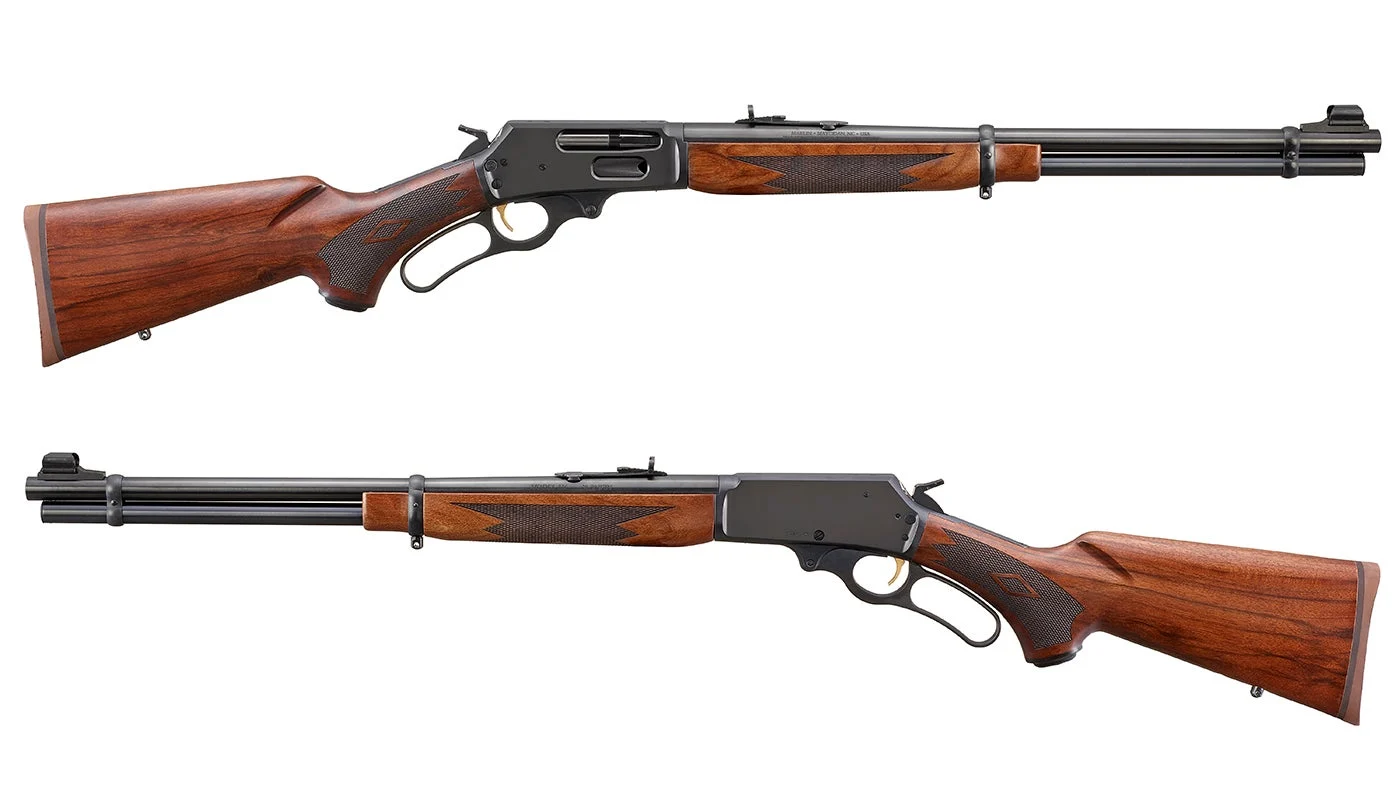
The new Ruger-made Marlin 336 Classic should be available in early 2023.
The new Ruger-made Marlin 336 Classic should be available in early 2023. Ruger/Marlin
Iron sights may once again gain in favor because of an apparent resurgence of interest in the real world of hunting, as opposed to the 1,000-yard world of pseudo-hunting. Ruger’s re-issue of the Marlin 336
is one good sign; another is the new-found interest in straight-walled cartridges. Both rifle and cartridges are tools for 200-yard-and-under shooting, which is probably where most shooting still occurs. One is reminded of the legendary, near-mythical Vermont whitetail hunter Larry Benoit who used a big rear peep and a big front bead for all his exploits.
Try using a Marlin 336 with iron sights. It feels and handles completely different than it does with a scope, as does any lever gun, or pump, or auto, or bolt. Your life will be vastly simplified. It is also—dare I say this?—an ideal prepper rifle. Marlin 336s are durable beyond belief, almost impossible to stop, accurate to 300 yards, fast-firing, and perfect for SHTF. (Yes, I am a half-hearted prepper, probably the only one whose bugout bag contains Pabulum and a hearing-aid charger.)
To sum up, are iron sights obsolete? No way. Despite having been around since antiquity, there’s still a place for them in the scheme of things, mainly for the simplest of reasons: Scopes fail. The Army and Marines, in adopting the new XM7 rifle to replace the M16 and M4 rifle and carbine, have apparently phased out iron backup sights, putting all their chips on a scope called the XM157 Fire Control Optic. (If this designation seems extreme, you’ll recall that the Army, back in the early 2000s, referred to bullets as “lethality mechanisms.”) I have a hunch that the Armed Services will regret this omission only once, as General J.E.B. Stuart said, and that will be continually. For hunters and soldiers alike, iron sights remain indispensable.

